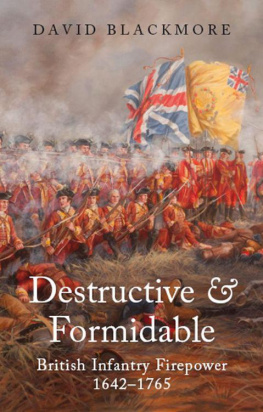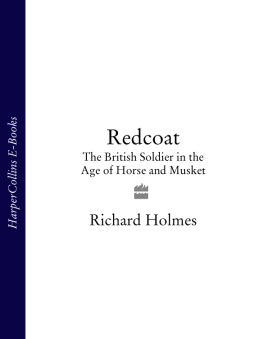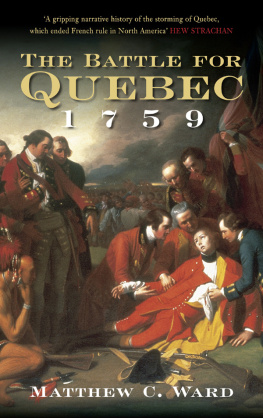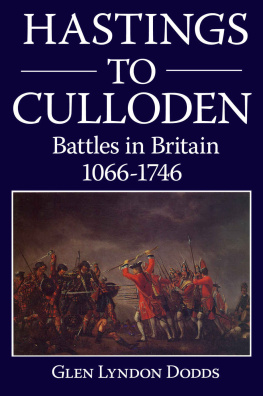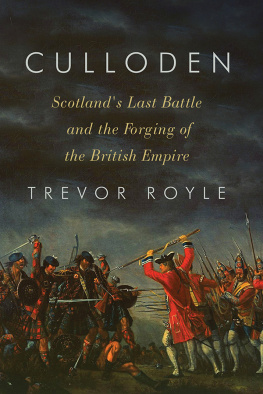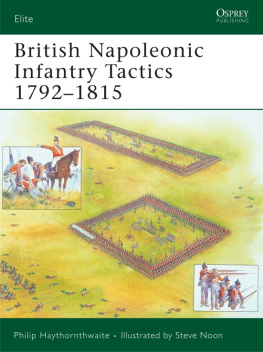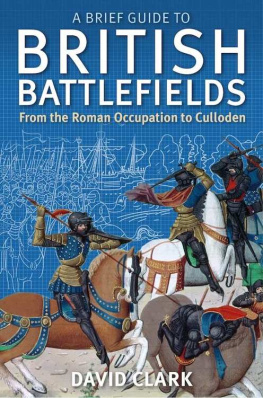Destructive and Formidable
British Infantry Firepower 16421765
David Blackmore

FRONTLINE BOOKS, LONDON

Destructive and Formidable: British Infantry Firepower 16421765
First published in 2014 by Frontline Books,
an imprint of Pen & Sword Books Ltd,
47 Church Street, Barnsley, S. Yorkshire, S70 2AS
www.frontline-books.com
Copyright David Blackmore, 2014
The right of David Blackmore to be identified as the author of this work has been asserted
by him in accordance with the Copyright, Designs and Patents Act 1988.
ISBN: 978-1-84832-768-9
All rights reserved. No part of this publication may be reproduced, stored in or introduced into a retrieval system, or transmitted, in any form, or by any means (electronic, mechanical, photocopying, recording or otherwise) without the prior written permission of the publisher. Any person who does any unauthorized act in relation to this publication may be liable to criminal prosecution and civil claims for damages.
CIP data records for this title are available from the British Library
For more information on our books, please visit
or write to us at the above address.
Printed and bound by CPI Group (UK) Ltd, Croydon, CR0 4YY
Typeset in 12/14.4 point Jenson Pro by JCS Publishing Services Ltd
Contents
Introduction
The year 1759 has been described as The Year Britain became Master of the World. As Brunswick hurried to bring up more infantry to support these battalions they were attacked by French infantry, who were also driven off. Eventually Brunswick reinforced the British and Hanoverians and the French Army broke.
Just weeks later, on 13 September, on the Plains of Abraham, outside Quebec, a small British army under the command of James Wolfe met the French army under Montcalm that defended the city. In a scene that foreshadowed later battles in the Spanish Peninsula and at Waterloo the British infantry stood in line as the French advanced on them in three great columns. What followed was described by Fortescue as the British infantry delivering the most perfect volley ever fired on a battlefield.columns. As a consequence of the battle the French were ejected from Canada, which subsequently became a British colony.
By 1763 and the end of the Seven Years War, British infantry had established a considerable reputation and become recognisable as the troops who would fight well, but in vain, in the American War of Independence, and most effectively against the forces of Napoleon. The period covered by this book, from the English Civil War to just after the end of the Seven Years War, is thus the formative period in the history of the British Army.
Modern writers of military history hold the opinion that the infantry of Britains armies of the seventeenth and eighteenth centuries repeatedly achieved a high level of effectiveness and superiority over their enemies in firepower and relied on that firepower to win battles. That assessment is justified, but a sufficiently searching investigation to explain how that superiority was achieved and then maintained over such a long period has been lacking
In fact identifying the tactical doctrine and battlefield combat techniques of British infantry and analysing their effectiveness, starting with the English Civil Wars and continuing up to 1765, in the immediate aftermath of the Seven Years War, is quite possible. The results identify previously unrecognised aspects of doctrine and technique and pinpoint times when key changes were brought about, such as the organisation of platoons into firings. This in turn exposes long-held misconceptions, such as that concerning the form that platoon firing first took.
There are some related tactical issues that had a bearing on the successes of British forces that have not been considered here, such as the actions of the other sections of the army. On occasion artillery played its part, particularly during the period when battalions had pairs of guns attached to them to bolster their firepower. For instance, at Culloden there was a pair of three-pounder cannon in every gap between the battalions in the front line. One of those between Barrells and Monros fired its last round of grapeshot at a range of only six feet. While it is usually stated that the rate of fire of artillery was two rounds a minute, evidence suggests that far higher rates of fire were achievable sometimes in excess of ten rounds a minute with clear implications for battlefield effectiveness. At Fontenoy and Minden, however, the infantry were deprived of this support, although the Royal Artillery did give some protection to the right flank of the infantry at Minden. At Quebec the Royal Artillery got just a single cannon to the battlefield, but it caused significant casualties. However, the artillery of the period covered is outside the scope of this work and it is worth pointing out that the contemporary correspondence of infantry is largely silent on the matter, suggesting that it had little direct bearing on the outcome of combat between battalions of infantry.
The influence of the other part of the army, cavalry, has also been omitted. Its actions, such as at Warburg, and inactions, as at Minden, were often vitally important to the success or otherwise of British forces. But the way the cavalry fought did not influence the methods of the infantry and the two arms frequently fought their own separate battles.
The nature of the enemy, almost invariably the French, was also important. Given the repeated success of British infantry against them, it is perhaps surprising that the French did not adopt any of their combat techniques. However, while the British were always fighting the French, the reverse is not true. France had many enemies during the period under consideration and Britain was a relatively minor military power, so far as its army was concerned, and thus was of limited influence on the international art of warfare. On a global scale the Royal Navy was far more important. In addition the French consistently held to the belief that their forte was the attack and that in the attack firepower was less important than lan and the bayonet.
Both the doctrine and the techniques of British infantry through the period from 1642 to 1765 have been analysed to ascertain their effect on the actual combat performance of the infantry. Making that analysis required an approach that started with understanding the workings of the infantry at the most basic level. Until the founding of the Royal Military College by the Duke of York in 1801 there was no formalised training for officers. A new young officer learnt his trade on the job with his regiment. As Houlding puts it:
With the assistance of brother subalterns or of a senior NCO he learned how to perform the manual and platoon exercises of the firelock or carbine, and the great variety of movements, commands, and posts it
Wolfe considered Blands Treatise of Military Discipline indispensable to the military education of young officers. This was the knowledge that a junior officer in the British Army required in order to carry out his duties, but many historians endeavour to understand and explain the functioning of the army without a similar level of knowledge. This does not prevent the production of accurate narrative accounts of battles and campaigns, particularly as these tend to be based on the accounts of officers and men who did have the professional knowledge to understand events. Similarly other aspects of military history such as training, finance, uniforms, equipment, strategy and social history can be effectively addressed without this knowledge. Yet it is essential to understand the drill manuals used to train soldiers in order to understand their doctrine and techniques. Military historians risk misunderstanding or even completely misinterpreting those accounts written by professionals because they do not share the same practical knowledge of how things were done and managed. In turn this gives rise to the danger of drawing incorrect conclusions about tactics and doctrine.

